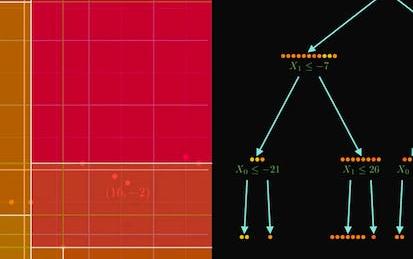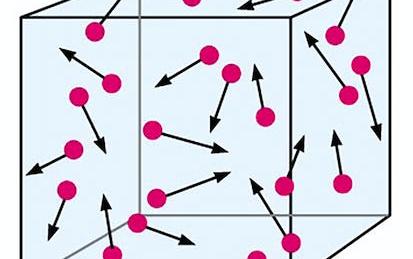

Our Courses

Chemical Engineering Thermodynamics 2
An appreciation of thermodynamics is required to become a chemical and biomolecular engineer. Thermodynamics can assess the viability of a process and is one of the curriculum's most essential topics. The principles are utilized in following engineering courses (kinetics, mass transfer, design, materials) and are applicable to numerous engineering disciplines.
-
Course by

-
 Self Paced
Self Paced
-
 32 hours
32 hours
-
 English
English

Introduction to Physical Chemistry
Chemical reactions underpin the production of pretty much everything in our modern world. But, what is the driving force behind reactions? Why do some reactions occur over geological time scales whilst others are so fast that we need femtosecond-pulsed lasers to study them? Ultimately, what is going on at the atomic level? Discover the answers to such fundamental questions and more on this course in introductory physical chemistry.
-
Course by

-
 Self Paced
Self Paced
-
 19 hours
19 hours
-
 English
English

Analyzing Thermodynamics Processes using Wolfram notebook
In this 1-hour long project-based course, you will learn to compute & analysis of thermodynamic processes viz Adiabatic process ,Isobaric process, Isochoric process, Isothermal and polytropic process.
-
Course by

-
 Self Paced
Self Paced
-
 2 hours
2 hours
-
 English
English

Dense Gases, Liquids and Solids
Course 4 of Statistical Thermodynamics addresses dense gases, liquids, and solids. As the density of a gas is increased, intermolecular forces begin to affect behavior. For small departures from ideal gas behavior, known as the dense gas limit, one can estimate the change in properties using the concept of a configuration integral, a modification to the partition function. This leads to the development of equations of state that are expansions in density from the ideal gas limit. Inter molecular potential energy functions are introduced and it is explored how they impact P-V-T behavior.
-
Course by

-
 Self Paced
Self Paced
-
 5 hours
5 hours
-
 English
English

Statistical Thermodynamics: Molecules to Machines
Modern engineering research focuses on designing new materials and processes at the molecular level. Statistical thermodynamics provides the formalism for understanding how molecular interactions lead to the observed collective behavior at the macroscale. This course will develop a molecular-level understanding of key thermodynamic quantities like heat, work, free energy and entropy. These concepts will be applied in understanding several important engineering and biological applications.
-
Course by

-
 Self Paced
Self Paced
-
 10 hours
10 hours
-
 English
English

Fundamentals of Macroscopic and Microscopic Thermodynamics
Course 1 first explores the basics of both macroscopic and microscopic thermodynamics from a postulatory point of view. In this view, the meaning of temperature, thermodynamic pressure and chemical potential are especially clear and easy to understand. In addition , the development of the Fundamental Relation and its various transformations leads to a clear path to property relations and to the concept of ensembles needed to understand the relationship between atomic and molecular structural properties and macroscopic properties.
-
Course by

-
 Self Paced
Self Paced
-
 9 hours
9 hours
-
 English
English

Computational Fluid Mechanics - Airflow Around a Spoiler
In this hands-on project, you will learn about Computational Fluid Dynamics (CFD) and perform an incompressible fluid flow simulation around a spoiler using the cloud-based simulation tool SimScale. We will set up simulation cases with provided geometries to learn the fundamentals of CFD and how a spoieler simulation is approached and set up in the first place.
-
Course by

-
 Self Paced
Self Paced
-
 3 hours
3 hours
-
 English
English

FEM - Linear, Nonlinear Analysis & Post-Processing
In this hands-on project, you will learn about the Finite Element Method (FEM) and perform a linear & nonlinear static analysis study using the cloud-based simulation tool SimScale. We will set up simulation cases with provided geometries to learn the fundamentals of the Finite Element Method and how a static linear and nonlinear analysis is approached in the first place.
-
Course by

-
 Self Paced
Self Paced
-
 3 hours
3 hours
-
 English
English

Statistical Molecular Thermodynamics
This introductory physical chemistry course examines the connections between molecular properties and the behavior of macroscopic chemical systems.
-
Course by

-
 Self Paced
Self Paced
-
 21 hours
21 hours
-
 English
English

CFD Simulation Through a Centrifugal Pump
In this hands-on project, you will learn about Computational Fluid Dynamics (CFD) and perform a pump simulation using the cloud-based simulation tool SimScale. We will set up simulation cases with provided geometries to learn the fundamentals of CFD and how a pump simulation is approached and set up in the first place.
-
Course by

-
 Self Paced
Self Paced
-
 4 hours
4 hours
-
 English
English

Introduction to Image Generation
This course introduces diffusion models, a family of machine learning models that recently showed promise in the image generation space. Diffusion models draw inspiration from physics, specifically thermodynamics. Within the last few years, diffusion models became popular in both research and industry. Diffusion models underpin many state-of-the-art image generation models and tools on Google Cloud. This course introduces you to the theory behind diffusion models and how to train and deploy them on Vertex AI.
-
Course by

-
 Self Paced
Self Paced
-
 1 hour
1 hour
-
 English
English

Chemical Engineering Thermodynamics 1
An appreciation of thermodynamics is required to become a chemical and biomolecular engineer. Thermodynamics can assess the viability of a process and is one of the curriculum's most essential topics. The principles are utilized in following engineering courses (kinetics, mass transfer, design, materials) and are applicable to numerous engineering disciplines.
-
Course by

-
 Self Paced
Self Paced
-
 27 hours
27 hours
-
 English
English

Non-Equilibrium Applications of Statistical Thermodynamics
Course 5 of Statistical Thermodynamics explores three different applications of non-equilibrium statistical thermodynamics. The first is the transport behavior of ideal gases, with some discussion of transport in dense gases and liquids. It starts with simple estimates of the transport properties of an ideas gas. It then introduces the Boltzmann Equation and describes the Chapman-Enskog solution of that equation in order to obtain the transport properties. It closes with a discussion of practical sources of transport properties.
-
Course by

-
 Self Paced
Self Paced
-
 8 hours
8 hours
-
 English
English

Finite Element Analysis Convergence and Mesh Independence
In this hands-on project, you will learn about the Finite Element Method (FEM) and perform a convergence study using the cloud-based simulation tool SimScale. We will set up a simple simulation case with a provided geometry to learn the fundamentals of the Finite Element Method and how a convergence study is approached in the first place.
-
Course by

-
 Self Paced
Self Paced
-
 3 hours
3 hours
-
 English
English

Quantum Mechanics
Course 2 of Statistical Thermodynamics presents an introduction to quantum mechanics at a level appropriate for those with mechanical or aerospace engineering backgrounds. Using a postulatory approach that describes the steps to follow, the Schrodinger wave equation is derived and simple solutions obtained that illustrate atomic and molecular structural behavior. More realistic behavior is also explored along with modern quantum chemistry numerical solution methods for solving the wave equation.
-
Course by

-
 Self Paced
Self Paced
-
 6 hours
6 hours
-
 English
English

Introduction to Thermodynamics: Transferring Energy from Here to There
COURSE DESCRIPTION This course provides an introduction to the most powerful engineering principles you will ever learn - Thermodynamics: the science of transferring energy from one place or form to another place or form. We will introduce the tools you need to analyze energy systems from solar panels, to engines, to insulated coffee mugs.
-
Course by

-
 Self Paced
Self Paced
-
 16 hours
16 hours
-
 English
English

Statistical Thermodynamics
This specialization was developed for the mechanical or aerospace engineering advanced undergraduate graduate or graduate student who already has a strong background in undergraduate engineering thermodynamics and is ready to tackle the underlying fundamentals of the subject. It is designed for those entering advanced fields such as combustion, high temperature gas dynamics, environmental sciences, or materials processing, or wishes to build a background for understanding advanced experimental diagnostic techniques in these or similar fields.
-
Course by

-
 Self Paced
Self Paced
-
 English
English

Ideal Gases
Course 3 of Statistical Thermodynamics, Ideal Gases, explores the behavior of systems when intermolecular forces are not important. This done by evaluating the appropriate partition functions for translational, rotational, vibrational and/or electronic motion. We start with pure ideal gases including monatomic, diatomic and polyatomic species. We then discuss both non-reacting and reacting ideal gas mixtures as both have many industrial applications. Computational methods for calculating equilibrium properties are introduced. We also discuss practical sources of ideal gas properties.
-
Course by

-
 Self Paced
Self Paced
-
 6 hours
6 hours
-
 English
English



